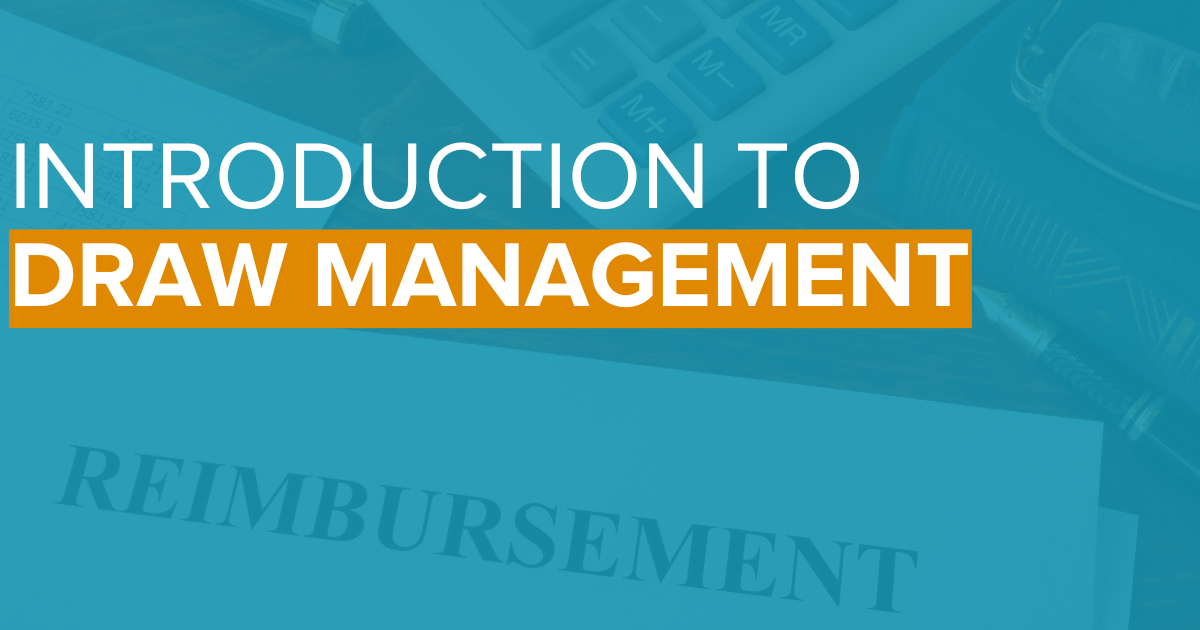One of the most important parts of investing in real estate is being quickly reimbursed by your hard money lender. Experiencing any financial delays can cost you money by pushing your project timeline back and keeping you in your hard money loan longer than expected. Whether you’re a fix and flip investor or working on a new construction project, it’s important to exit your deal fast to pay off your loan and move on to your next investment project. Plus, general contractors won’t appreciate being told that their labor and material costs aren’t being covered in a timely fashion, which could hurt your relationship with them for future projects.
We’re here to help you understand how construction financing through draws works, as well as advice for putting together your draw schedule and tips for using a hard money lender’s draw system to keep your project moving without a hitch.
What is a draw schedule?
The draw schedule for a real estate investor is simple: it’s the agreed upon phased timeline for when work is expected to be completed and how much money will be spent on each specific phase. Investors and lenders use this draw schedule to keep track of a project’s progress and reimbursement needs, allowing for a smooth distribution of funds as needed. Your project’s scope of work is what determines your draw schedule, so you should discuss with your general contractor to plan the timeline and budget allocation for each phase of work.
Draw schedules can be flexible to accommodate changes and pivots to a project plan. Lenders understand that changes occur throughout a project and should be able to work with the investor to adjust their proposed draw schedule as necessary. However, these changes shouldn’t include anything that impacts the final ARV, and should not involve increases to the overall cost of the project. Any kind of changes to the ARV after loan terms have been agreed upon will require a new appraisal and will then include changes to the draw schedule.
Why do I need a draw schedule?
Real estate investors, especially newer investors, might not understand why they need to put together a draw schedule. For starters, it helps keep you and your lender on track and on budget. By following your project’s scope of work, it ensures you focus on the most immediate steps needed to complete your project quickly and allow you to be fully reimbursed in a timely manner. Lenders especially appreciate having as much of a strategic plan in place as possible to minimize risk and ensure the highest confidence in their borrower’s project.
Using a draw schedule can also save real estate investors money. Most hard money loans use interest-only payments with a balloon payment at the end to pay back the agreed upon loan amount. It is important to note that in some cases, interest is only paid on the funds that you draw from your lender and not on the total loan amount! If your project ends up coming in under-budget or you decide to use additional personal capital to complete the project, you may have funds available that you choose not to draw upon. By not accessing those funds, you’re not paying interest on them and thus saving yourself money on your project.
How do hard money lenders give me the money?
The first step for drawing down your hard money funds is to verify that the work has been completed. Typically, the completion of work is verified using a third-party inspector or trusted picture verification app such as Truepic. This review is done by a trusted third-party source so that there’s no conflict of interest between parties when releasing the funds. Upon receiving and reviewing the completed work inspection, the hard money lender will then distribute funds to fully reimburse the real estate investor, allowing them to use this money to pay everyone needed and continue their project moving forward.
From there, its all about how fast the lender can process the request and release the funds to the borrower. Hard money lenders will wire the funding to whichever bank account the borrower chooses, and it should arrive within 48 hours or less. Its important to work with a lender that moves as fast as you do, because time is money for real estate investors and these funds let your project continue without any financial issues.
Drawing Funds from Asset Based Lending
Asset Based Lending utilizes a professional draw management team to ensure your project doesn’t experience financial delay. Below is an explanation of how our draw system works and what investors need to know, as well as best practices for putting together your draw schedule and requesting fund reimbursement.
- Work with your general contractor on your draw schedule. They will be well-versed in understanding timelines for their work and when funding will be needed. Draw schedule should follow the submitted scope of work.
- We provide draw funding within 24 hours of request. Once the request comes in, our team guarantees you will receive funding in 24 hours or less.
- We reimburse for completed work. As work is completed, our team issues funds to reimburse and satisfy the debt. The borrower is responsible for paying their general contractor in full and on time.
- We use a third party inspector. ABL utilizes an impartial inspector or verified app to confirm completion of work so there’s no conflict of interest when distributing funds.
- Your draw schedule is flexible. We understand that changes occur for many reasons during renovation projects. ABL is happy to work with you as changes occur to ensure your project doesn’t experience financial delay.
- If changes occur that ultimately affects the after-repair value (ARV), another appraisal must be ordered. Since the ARV is determined based on the initial scope of work, any significant changes require a re-appraisal. Borrower is responsible for appraisal costs.
- We’re your partner on this loan. Our job is to keep your project funded from start to finish and help this deal be successful. We’re always available to help you with questions or issues that arise during your loan process, draw or otherwise.
Final Thoughts
ABL makes draw management simple, allowing our borrowers to focus on their project and not worry about financial delays holding them back. We use this draw system for fix and flips as well as new construction, with our in-house draw team managing all bridge loans. Our team has distributed hundreds of millions of funds to borrowers over the years and have originated over $2B in real estate investing loans. If you have any questions about our draw process or are looking to be approved for a hard money loan, then contact us today.







0 Comments